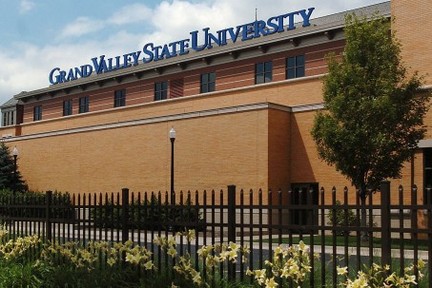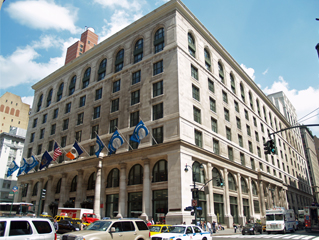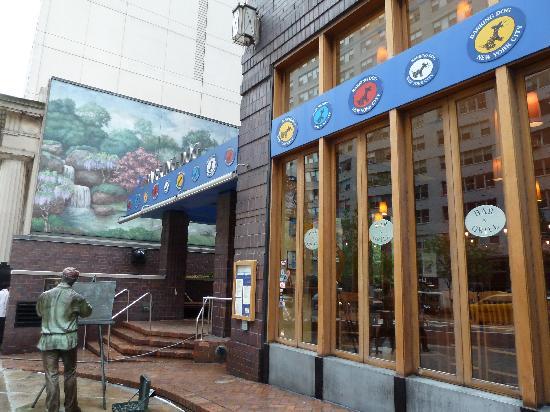About Us
The Society for U.S. Intellectual History has primarily been known for its annual conference and its award-winning blog. But it is also a professional society with a governance structure.
Now that the society has a website, we should provide a brief version of its origins.
I n 2007, a group of young U.S. intellectual historians, Tim Lacy, Mike O’Connor, Paul Murphy, and Andrew Hartman, among them, began a blog simply called U.S. Intellectual History. That group made the audacious decision to gather at the Great Lakes History Conference at Grand Valley State University in 2008 and organize panels around U.S. intellectual history. The scheme worked–ten panels came together with such success that CUNY Graduate Center offered to host another conference in 2009. This time, though, the U.S. intellectual history group created a stand-alone affair.
n 2007, a group of young U.S. intellectual historians, Tim Lacy, Mike O’Connor, Paul Murphy, and Andrew Hartman, among them, began a blog simply called U.S. Intellectual History. That group made the audacious decision to gather at the Great Lakes History Conference at Grand Valley State University in 2008 and organize panels around U.S. intellectual history. The scheme worked–ten panels came together with such success that CUNY Graduate Center offered to host another conference in 2009. This time, though, the U.S. intellectual history group created a stand-alone affair.
 And a challenge of sorts emerged: the 2009 conference included a reunion of key members from the Wingspread Conference held in 1977. Charles Capper chaired a panel that included David Hollinger, Dorothy Ross, Thomas Bender, and David Hall. Situated in a smallish theater packed with participants of the conference, this panel reminisced about their careers and issued a none-too-subtle warning regarding the marginalization of intellectual history as a field. Nothing energizes a group better than the whiff of its imminent demise. The 2010 conference took up the issues laid out the year before on a panel chaired and organized by Casey Nelson Blake that included George Cotkin, Wilfed McClay, Rochelle Gurstein, David Steigerwald, and Elizabeth Lasch Quinn. Once again speaking to a packed theater, the panelists wondered if we had been asking the wrong questions regarding the state of U.S. intellectual history. Looking at scholars who were young and old, employed, under-employed, and unemployed, the panel made a case for the fields great vitality if not for boundless opportunities.
And a challenge of sorts emerged: the 2009 conference included a reunion of key members from the Wingspread Conference held in 1977. Charles Capper chaired a panel that included David Hollinger, Dorothy Ross, Thomas Bender, and David Hall. Situated in a smallish theater packed with participants of the conference, this panel reminisced about their careers and issued a none-too-subtle warning regarding the marginalization of intellectual history as a field. Nothing energizes a group better than the whiff of its imminent demise. The 2010 conference took up the issues laid out the year before on a panel chaired and organized by Casey Nelson Blake that included George Cotkin, Wilfed McClay, Rochelle Gurstein, David Steigerwald, and Elizabeth Lasch Quinn. Once again speaking to a packed theater, the panelists wondered if we had been asking the wrong questions regarding the state of U.S. intellectual history. Looking at scholars who were young and old, employed, under-employed, and unemployed, the panel made a case for the fields great vitality if not for boundless opportunities.
 The 2010 conference brought a group of us together to make a more concerted effort to ratify the field. Over breakfast one morning of the two-day conference, we began outlining the creation of a new academic society. That initial gang included: Andrew Hartman, Lauren Kientz Anderson, David Sehat, Tim Lacy, Mike O’Connor, Paul Murphy, Julian Nemeth, Sylwetser Ratowt, Ben Alpers, James Levy, and Ray Haberski. Out of this group came a proposed constitution and bylaws and the hope to elect officers within a year. By June 2011, the new Society for U.S. Intellectual History had been officially created with its first officers: Hartman as president, O’Connor as treasurer, Haberski as secretary, Alpers and Lacy as co-chair of publications, and Sehat as the conference chair for 2012.
The 2010 conference brought a group of us together to make a more concerted effort to ratify the field. Over breakfast one morning of the two-day conference, we began outlining the creation of a new academic society. That initial gang included: Andrew Hartman, Lauren Kientz Anderson, David Sehat, Tim Lacy, Mike O’Connor, Paul Murphy, Julian Nemeth, Sylwetser Ratowt, Ben Alpers, James Levy, and Ray Haberski. Out of this group came a proposed constitution and bylaws and the hope to elect officers within a year. By June 2011, the new Society for U.S. Intellectual History had been officially created with its first officers: Hartman as president, O’Connor as treasurer, Haberski as secretary, Alpers and Lacy as co-chair of publications, and Sehat as the conference chair for 2012.
